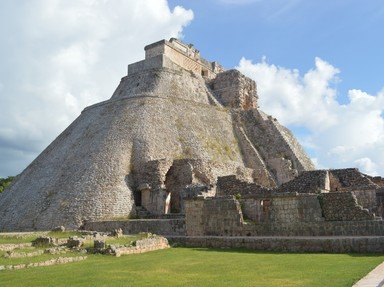Quiz Answer Key and Fun Facts
1. Nanauatzin was an Aztec deity that sacrificed himself and his blood to create and become which important being?
2. Some Aztec ceremonies called for human sacrifice in mass numbers. One such ceremony called for many sacrifices in order to represent the victory of the god of war over his brothers, the Centzon Huiztnaua. What was the name of the Aztec god of war whose temple in Tenochtitlan was named Coatepetl?
3. An important issue when dealing with human sacrifice in Aztec culture is what happened to the victims after death. Did the Aztecs believe that sacrifice victims would enter the same heaven as warriors who died in battle?
4. The Aztecs believed that they lived under the Fifth Sun and that they needed to keep it going. During a solar eclipse, they believed that the sun was under attack. Which group was sacrificed during an eclipse to help the sun warriors defend the sun?
5. Human sacrifices were often prisoners taken during times of war between the villages and peoples under Aztec control. During times of peace, there were no prisoners to use for sacrifice, so village leaders would arrange wars with each other for the purpose of taking captives for sacrifice. What were these wars known as?
6. The celebration for which god called for the sacrifice of children, especially their tears?
7. Other than humans, which of the following did the Aztecs offer as sacrifices?
8. Which drink formed a part of many rituals and was given to sacrificial victims before they were to be sacrificed?
9. Which god was generally associated with being opposed to human sacrifices and called for the sacrifice of snakes, birds, and flowers?
10. Sometimes, prisoners of war would be given the opportunity to fight for their freedom against seven of the Aztec's best warriors. What would be done to ensure that this was not a fair fight and to give the Aztec warriors the advantage?
Source: Author
tiffanyram
This quiz was reviewed by FunTrivia editor
bloomsby before going online.
Any errors found in FunTrivia content are routinely corrected through our feedback system.

